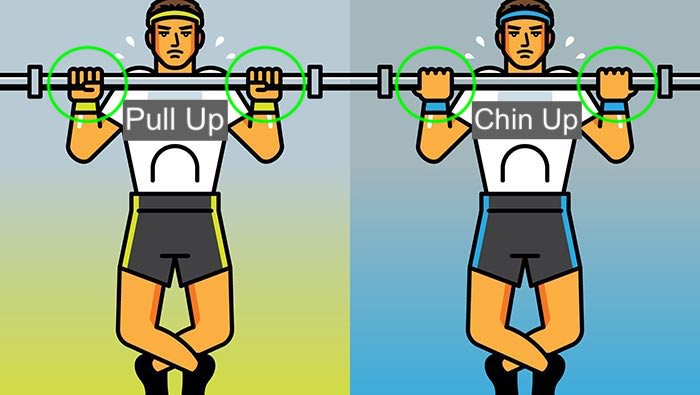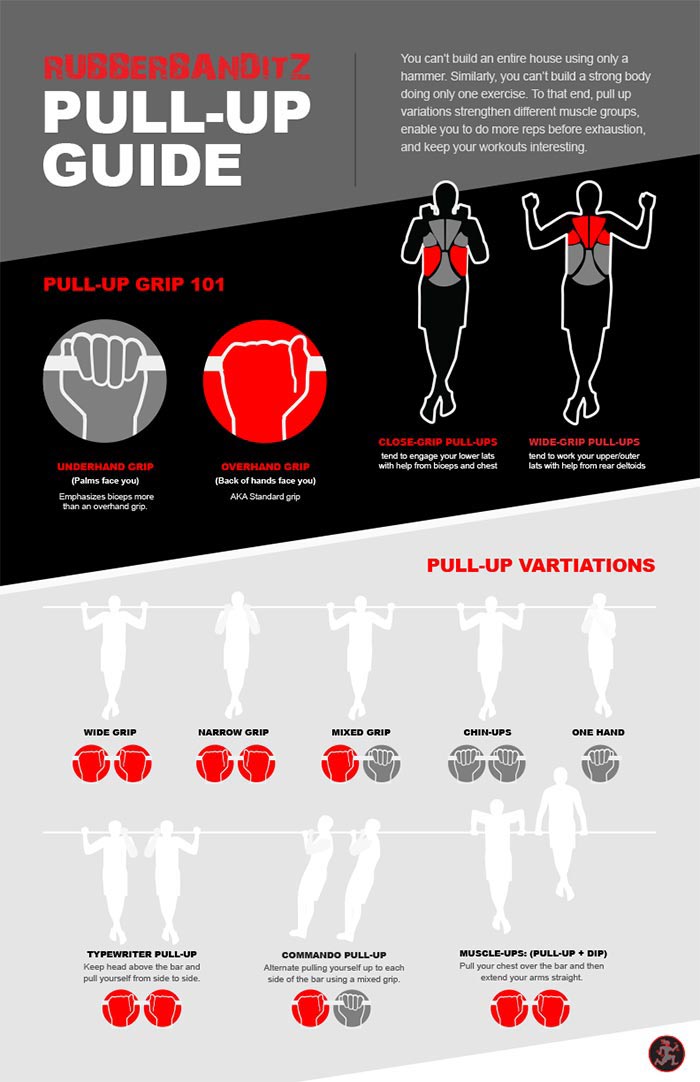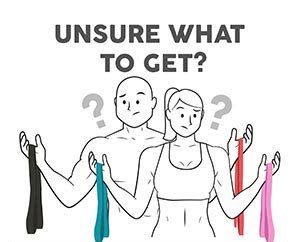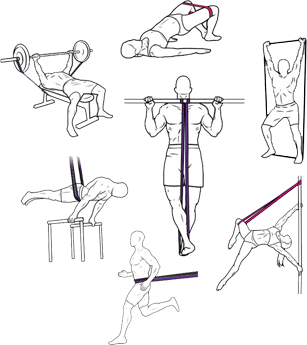Hey all! Today we will be addressing a common question that we are frequently asked. The steep rise in functional and bodyweight training has opened the eyes of the masses to the unique benefits of integrating pullups and chin-ups into your weekly training regimen. This begs the question, what are the fundamental differences and which one is better; pull-ups or chin-ups?
Chin up (palms facing away from you) or pull up (palms facing towards you) -- both require you engage multiple muscle groups to perform each full range of motion, and both have a definitive numerical standard by which to measure your strength/progress/results, but which actually rules the roost?

I'll start with the almighty (annoying) personal training and economist answer: it depends.
It depends on the reason you are doing a chin up and/or pull up. (Who am I and what am I trying to achieve here?).
I'm only half-joking. Most of you are reading along today are going to be training to become a little bit stronger or bigger or sexier week-to-week. If you fit into this category then I have news for you… This choice likely doesn't matter very much at all in getting bigger or stronger or sexier. What matters far more is progressing over time in whichever of these two you choose. Pick one and add repetitions and load to the movement over time and you will get meaningful results. Simple right?
One noticeable difference between pullups and chin-ups is that you get more pectoralis major (pec) and biceps brachii (biceps) recruitment in a chin-up, so maybe this is a more time-effective choice if you are looking to be bigger or stronger biceps.
But maybe that isn't the only type of person reading… For example, if you are a desk worker, you might consider the pull up's ability to activate the lower trapezius (traps) as more important, says Dr. Mike Reinold of Champion Physical Therapy and Performance, because a stronger set of lower traps might lead to better posture and a less painful day-to-day life. It might also reduce your risk of shoulder injuries, generally speaking, by helping to strengthen the shoulders and surrounding stabilizer muscles, which can help combat the common hunched over drooping tendency that plagues desk jockeys around the world.
So, as you can see here, both pulling exercises are great, it is just that chin ups work better for some populations and pull ups for others. The good news is that, because the shoulder extends in both cases, the latissimus dorsi (lats) activation is similarly high in both varieties and that your back will definitely strengthen from doing both fairly evenly.
While the scientific studies in this area demonstrate that lat activation is similar in both exercises, the bicep and pec is more active in a chin up and the lower trapezius is used more in a pull up there is another serious point to consider. One that no study can really cover and no article can clearly delineate for you. This is that studies look at various swaths of different populations of people and that you weren't (most likely) part of the population tested, so exact results may vary. Anatomy changes person to person quite significantly and dictates, to a large degree, what is likely to be best for you. You may also have a movement or injury history that changes this again.
In a maze like that, how could you possibly know which is best for you?
Well, again it is stupidly simple. Test.
Do an 8 to 12 week cycle with both. Try higher rep ranges, lower ones. Where do you improve most relative to your goals? Did your back and biceps grow the way you want? Did your posture improve and shoulder feel better?
Good. Then keep doing that until you no longer get what you came for or it drastically slows in progress.
Then go back to the drawing board, test again and repeat.
Another key difference to consider is range of motion at the elbow and shoulder. In one study published in the Journal of Strength and Conditioning Research (Youdas, 2010), the chin up generated 136 degrees of bend at the elbow (on average) and 182 degrees of bend at the shoulder, while the pull up created 126 degrees and 163 degrees respectively. If you are a desk worker, you likely don't put your arms overhead or behind you often, meaning that those ranges of motion are likely not ones you have amazing amounts of control over, as you don’t spend enough time there to be as strong as you could be.
Following this train of thought, it would be worth picking the option that uses less range to minimize your risk of injury while training. Another tick for team pull up. This also works the opposite way, as some of you may need more overhead range of motion and strength for whatever it is you do day-to-day. In this case, starting with chin ups probably makes more sense, as it uses more range as an exercise.
Now that we have looked at the differences, let's look at things that should not change regardless of exercise choice, so we don’t end up doing either of these wrong.
The first thing worth noting is that a wide grip does not equal wide lats. It equals you likely fighting against your shoulder anatomy and fighting to return to the gym after you injured your shoulder. Slightly wider than shoulder-width is totally acceptable, but moving beyond that you are likely going to run into the troubles I just talked about. Many people find slightly wider to slightly narrower than shoulder-width the most comfortable place to be. Decide that for yourself.
The next is a little controversial in some circles- but chest to bar (for me at least) is a must. We talked earlier briefly about shoulder health and the lower traps being strong- well- chest to bar at the very least encourages the retraction and depression needed at the scapula to act on those suckers. While additional range can be an issue for some, it is also an essential building block to ensure you can access more exercises at a greater range for a greater effect in the long term (just ensure you are ready for them).
What do I do if I can’t get my chest to the bar?
Great question. This is rather important as it dramatically increases the range of motion and muscles targeted during each rep. To help bridge the gap between current strength and chest-to-bar pullups/chin-ups, we recommend using chinup assist bands to help give you just the extra boost needed. We typically recommend using two different sized pullup bands for your training. This gives you three district levels of resistance that accommodates for increases in strength as well as burnout/fatigue.
For example, let’s say you are starting out and want to use the lighter band (which we’ll call #1) to start. Then you begin to fatigue and switch to the heavier band (which we’ll call #2) for an additional set. Then, when you are nearing burnout, you add #1 and #2 together on the bar and rep out a final set. You have now completed three sets of pullups and made significantly more strides in your quest for strength gains than if you simply stopped after one set.
Finally, you can only chin up or pull up for as long as you can hang. Hanging is also a great way to build in the passive range you need in the shoulders to perform these moves to some degree. So I highly recommend hanging from the bar in what is known as a ‘dead hang position’ as a base builder before, during, and after your pullup/chinup training. Dead hangs have several significant advantages to your training:
- They help decompress your spine
- They help open your chest up
- Increases shoulder mobility and joint range of motion
- Improves grip strength
- Makes your forearms stronger
- Helps strengthen your rotator cuff and prehab/rehab shoulder injuries
- Leads to posture correction
- Lengthens your latissimus dorsi
Pull up or chin up? You decide. At the end of the day nothing is stopping you from doing both. Here is a simple chart to help you along your pull-up or chin-up journey.







0 Comments
Leave a Comment